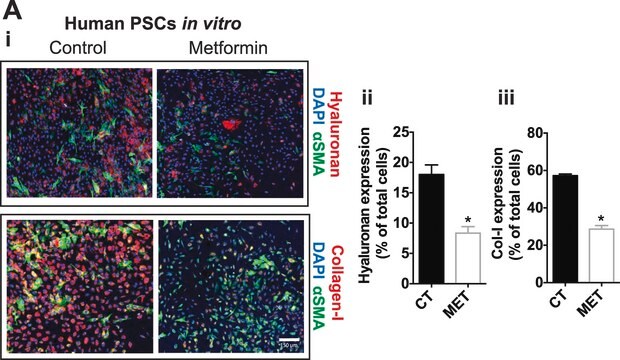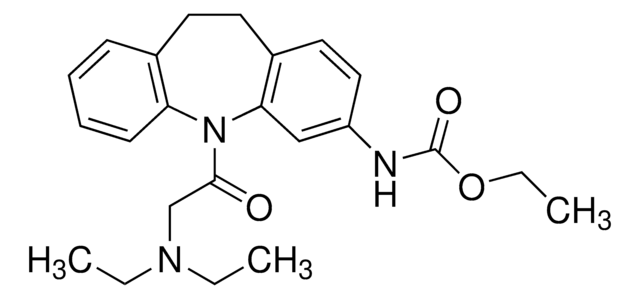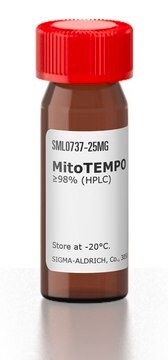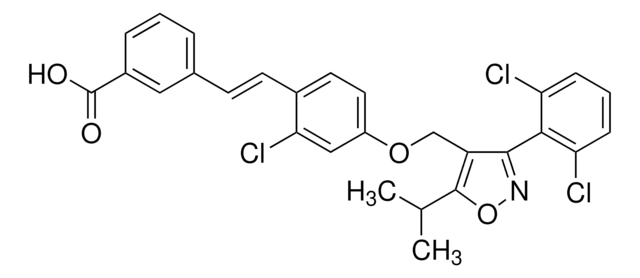T1443
TCPOBOP
≥98% (HPLC), solid
Sinónimos:
1,4-Bis-[2-(3,5-dichloropyridyloxy)]benzene, 3,3′,5,5′-Tetrachloro-1,4-bis(pyridyloxy)benzene
About This Item
Productos recomendados
Quality Level
assay
≥98% (HPLC)
form
solid
color
white
solubility
DMSO: >10 mg/mL
H2O: insoluble
storage temp.
2-8°C
SMILES string
Clc1cnc(Oc2ccc(Oc3ncc(Cl)cc3Cl)cc2)c(Cl)c1
InChI
1S/C16H8Cl4N2O2/c17-9-5-13(19)15(21-7-9)23-11-1-2-12(4-3-11)24-16-14(20)6-10(18)8-22-16/h1-8H
InChI key
BAFKRPOFIYPKBQ-UHFFFAOYSA-N
Gene Information
human ... NR1I3(9970)
Application
Biochem/physiol Actions
Features and Benefits
Preparation Note
Storage Class
11 - Combustible Solids
wgk_germany
WGK 3
flash_point_f
Not applicable
flash_point_c
Not applicable
ppe
Eyeshields, Gloves, type N95 (US)
Elija entre una de las versiones más recientes:
¿Ya tiene este producto?
Encuentre la documentación para los productos que ha comprado recientemente en la Biblioteca de documentos.
Contenido relacionado
Apoptosis, or programmed cell death (PCD), is a selective process for the removal of unnecessary, infected or transformed cells in various biological systems. As it plays a role in the homeostasis of multicellular organisms, apoptosis is tightly regulated through two principal pathways by a number of regulatory and effector molecules.
n proliferating cells, the cell cycle consists of four phases. Gap 1 (G1) is the interval between mitosis and DNA replication that is characterized by cell growth. Replication of DNA occurs during the synthesis (S) phase, which is followed by a second gap phase (G2) during which growth and preparation for cell division occurs. Together, these three stages comprise the interphase phase of the cell cycle. Interphase is followed by the mitotic (M) phase.
Nuestro equipo de científicos tiene experiencia en todas las áreas de investigación: Ciencias de la vida, Ciencia de los materiales, Síntesis química, Cromatografía, Analítica y muchas otras.
Póngase en contacto con el Servicio técnico





